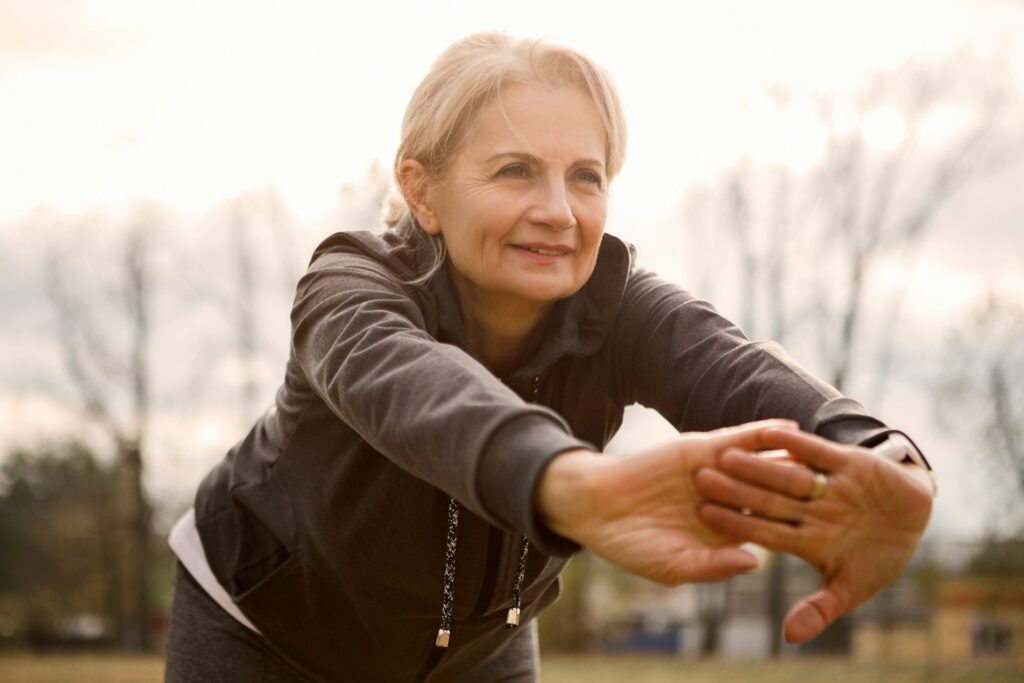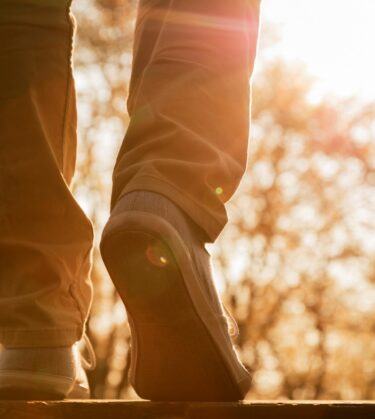
Sports and Exercise Medicine
You love to perform at your best. So, when injury stops you in your tracks, that can be hugely frustrating. At...

As we get older slips, trips and falls become more common due to changes in our health. Whilst there are ways to make your environment safer and less hazardous, being more active and regular exercise can also help.
Regular exercise is a well-known way to prevent falls. Musculoskeletal, Sports and Exercise Medicine Consultant, Justin Yeoh who consults at our centre in Surrey, advises, “Strengthening large muscle groups will help improve balance and keeps us more upright. A combination of aerobic, balance, flexibility, gait/coordination and strength training will help improve balance and reduce the likelihood of slipping, tripping or falling.”
Justin summarises the five top exercises to build into your daily routine, using items around your home, and which will help prevent falls:
Exercise: Walking
There is no specific type of exercise you should be doing as you get older, but cardiovascular activities are usually best. Walking is great exercise. A daily walk, even just a 15-minute stroll to the shops or around the block, will be beneficial. Make a regular walk part of your daily routine. Aim for a pace which makes you feel a bit of breath, but you can still hold a conversation.
Exercise: Single Leg Balance
Stand in front of a counter or between two study chairs of the same height. Hold on to the supportive surface and bend the knee to raise one foot and balance on one leg. Then do the same on the other leg. Aim to balance for 10 – 15 seconds on each leg. Start with both hands holding on for support. As you progress, increase the difficulty by using only one hand and then no hands.
Exercise: Calf stretch
Place your hands against a wall for stability. Bend the right leg and step the left leg back at least a foot’s distance, keeping it straight. Both feet should be flat on the floor. The left calf muscle is stretched by keeping the left leg as straight as possible and the left heel on the floor. Hold for 20 seconds. Repeat with the opposite leg. Perform three on each side.
Exercise: Heel to toe walking
Stand upright placing your right heel on the floor directly in front of your left toe. Then do the same with your left heel. Looking forward at all times. If necessary, put your fingers against a wall for stability. Try to perform at least five steps. As you improve, move away from the wall.
Exercise: Sit to stand
Sit on the edge of the chair, feet hip-width apart. Lean slightly forwards. Stand up slowly using your legs, not your arms. Keep looking forward and do not look down. Stand upright and then slowly sit down bottom first. Aim for five repetitions – the slower the better.

Adopting these simple exercises into your daily routine will improve your muscle strength and balance.
Before starting any new fitness program, ask your doctor to make sure it is safe. This is particularly true if you have been feeling dizzy or have a chronic health condition such as heart disease, diabetes, or asthma. The best way to acquire exercise guidance and ensure you are doing it safely is to consult your doctor or an experienced healthcare specialist.
If you don’t have a referral from a health professional, you can now easily self-refer for an MRI scan at Prime Health. We offer daily appointments, allowing you to choose a time and date that suits your convenience.
